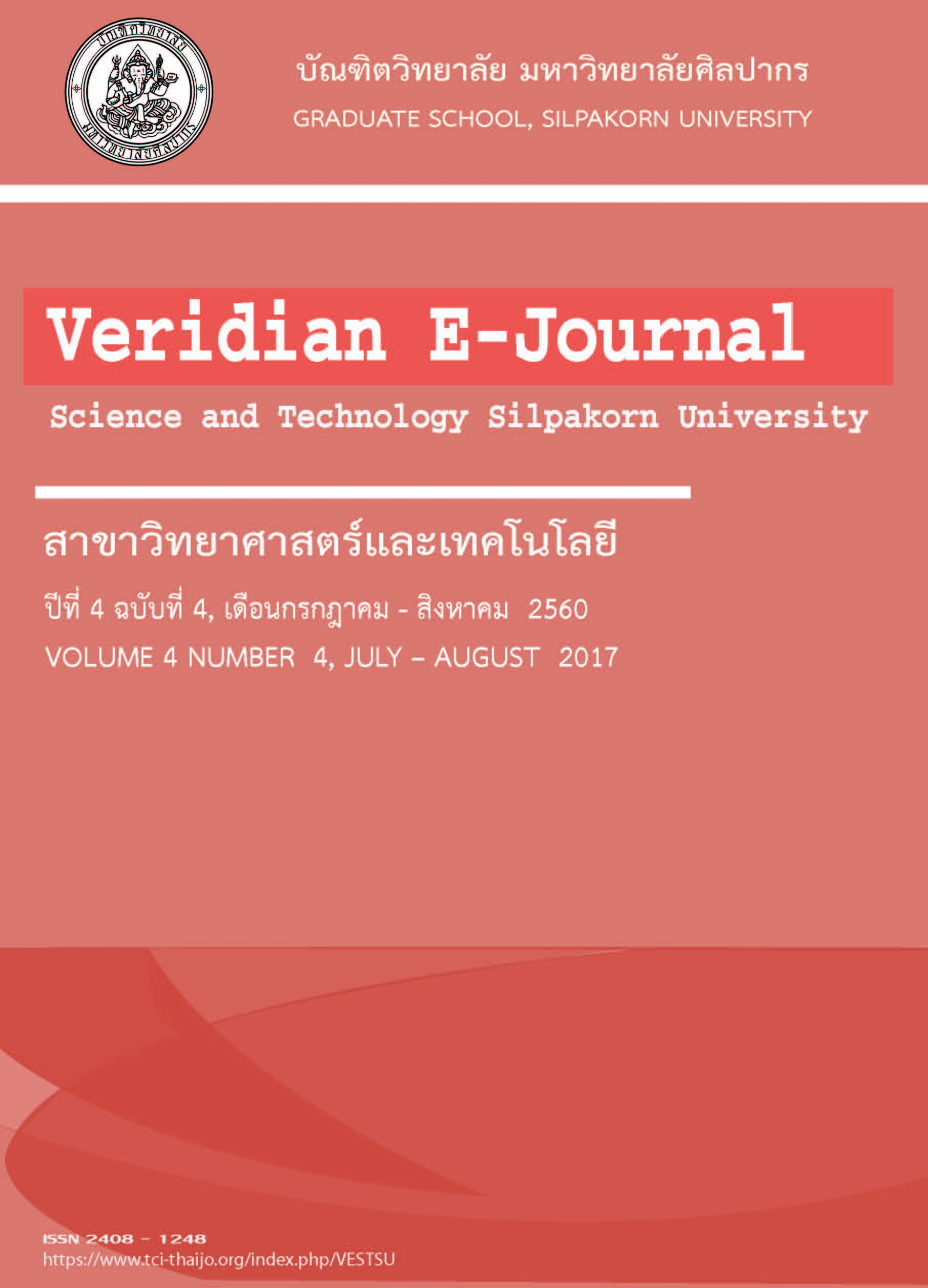ผลของสภาวะความเป็นกรดและด่างต่อปริมาณของเมทแอมเฟตามีนในตัวอย่างปัสสาวะ ที่ตรวจวัดโดย CEDIA assay(The effect of sample pH on methamphetamine levels in urine samples as measured by CEDIA assay)
Main Article Content
Abstract
จุดมุ่งหมายของงานวิจัยฉบับนี้เพื่อศึกษาผลของสภาวะความเป็นกรดและด่างของตัวอย่างปัสสาวะต่อปริมาณของเมทแอมเฟตามีนในตัวอย่างปัสสาวะ ที่ตรวจวัดโดยวิธีภูมิคุ้มกันวิทยา Cloned enzyme donor immunoassay (CEDIA) โดยตัวอย่างปัสสาวะได้มาจากผู้เสพเมทแอมเฟตามีนจำนวน 26 ตัวอย่าง ถูกจับโดยตำรวจระหว่างเดือนกุมภาพันธ์ 2558 ถึงเดือนมกราคม 2559 โดยตัวอย่างปัสสาวะที่ได้มี pH อยู่ในช่วง 6 ถึง 9 และปริมาณของเมทแอมเฟตามีนที่ตรวจวัดได้โดยวิธี CEDIA อยู่ในช่วง 600-2000 ng/mL ตามประกาศของสำนักงานปราบปรามยาเสพติด (2543) กำหนดค่าวิกฤตปริมาณของเมทแอมเฟตามีนที่ตรวจวัดได้คือ มากกว่าหรือเท่ากับ 1000 ng/mL จากตัวอย่างปัสสาวะทั้ง 26 ตัวอย่าง ซึ่งตรวจวัดโดยวิธี CEDIA พบค่าที่มีผลบวกจำนวน 14 ตัวอย่าง และผลลบจำนวน 12 ตัวอย่าง ซึ่งตัวอย่างที่ให้ผลบวกนำมาตรวจยืนยันผลด้วยเทคนิค GC-MS จากการศึกษาผลของ pH โดยปรับ pH ของตัวอย่างปัสสาวะจาก 1 ถึง 14 ตัวอย่างปัสสาวะในแต่ละ pH นำมาตรวจวัดโดยใช้วิธี CEDIA จากการศึกษาพบว่าปริมาณของเมทแอมเฟตามีนมีค่าเปลี่ยนแปลงเมื่อมีการเปลี่ยน pH ของตัวอย่างปัสสาวะ โดยจะตรวจพบแนวโน้มของปริมาณของเมทแอมเฟตามีนลดลง ในตัวอย่างปัสสาวะที่มีสภาวะเป็นเบส (pH>10) ในขณะที่ปริมาณของเมทแอมเฟตามีนเพิ่มขึ้นเมื่อ pH ของตัวอย่างปัสสาวะลดลง (pH<5) เมื่อเปรียบเทียบกับปริมาณของเมทแอมเฟตามีนของตัวอย่างปัสสาวะก่อนปรับ pH จากผลการศึกษานี้แสดงว่า pH ของตัวอย่างปัสสาวะมีผลต่อค่าความถูกต้องของปริมาณของเมทแอมเฟตามีนที่ตรวจโดยวิธี CEDIA และผลการวิจัยนี้จะเป็นปัญหาเมื่อปริมาณของเมทแอมเฟตามีนที่ได้นั้นใกล้เคียงกับค่าวิกฤตที่มีผลทางกฎหมาย
The aim of this study is to investigate the effect of pH on the concentrations of methamphetamine (MA) in urine samples measured by cloned enzyme donor immunoassay (CEDIA). The samples were collected from 26 drug abusers arrested by police during February 2015 to January 2016. The pH values of the original urine samples were in the range of 6 - 9 and the MA concentrations detected by CEDIA assay were in the range of 600-2,000 ng/mL. According to the Office of the Narcotics Control Board Thailand guideline (2000), the qualitative cut-off for MA testing is ≥1000 ng/mL.
Among 26 samples, 14 samples were positive whereas 12 samples were presumed negative by CEDIA method. Positive samples were confirmed and quantitated by GC-MS analysis. The study on the effect of pH on CEDIA testing was carried out by varying the pH of the urine samples from 1 to 14. The samples of each pH unit were analyzed to determined MA concentration by CEDIA. The variation of MA concentrations measured by CEDIA with the varying pH of the urine samples was noted. A decreasing trend of the MA concentrations was observed in samples with more alkaline condition (pH>10) whereas the MA concentrations increasing with decreasing pH of the samples (pH<5) when compared to the original pH. The results in this study demonstrated that pH of the urine sample can affect the accuracy of CEDIA method, and this can be problematic when the concentration of MA is close to the legal cut-off value.

